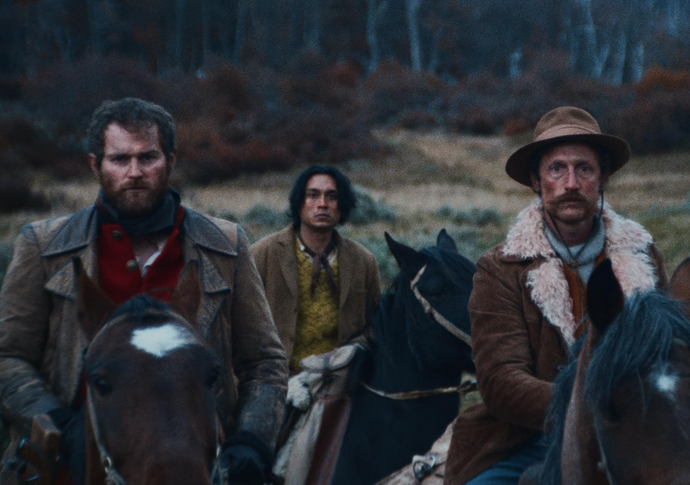Guns and greed in neo-western The Settlers
Film considers brutal colonial projects in South America – and the lasting damage they wrought
Thursday, 8th February — By Dan Carrier

THE SETTLERS
Directed by Felipe Gálvez Haberle
Certificate: 15
☆☆☆☆
A REAL genocide that saw the Onas population – an indigenous community living in Tierra del Fuego, Chile – murdered by land-grabbing capitalists is the starting point of this slow-burner western.
Landowner José Menéndez (Alfredo Castro) is based on a real character, a Spanish developer who bought up swathes of Chile and Argentina to exploit the land and its people for everything he could. And this story of how he sent three men out into land he was claiming as his own to “clear” people living there considers the ludicrous greed of the colonial projects and the lasting damage it wrought.
Former British soldier MacLennan (Mark Stanley) works in his red tunic and is Menéndez’s hired gun. MacLennan tells all he was a lieutenant – but he isn’t all he pretends to be.
Menéndez has thousands of acres under his control and is employing indigenous workers to stake out land, build fences to keep his sheep safe.
MacLennan shows in the opening scene his approach to management, which entails using murder as a punishment and as a motivator.
He is told to choose a worker who can handle a gun, and so picks out Segundo (Camilo Arancibia), of indigenous origins. But he also sends an American mercenary along, adding to the tensions. We have the man seeking his fortune at any cost, the troubled ex-serviceman, and the sharpshooter under the yoke of colonialism having to keep quiet as atrocities unfold in front of him.
It is a world based on extreme violence and lack of respect for the individual. This new world was built on the bodies of those who lived there before the settlers. The film splits along the way, jumping seven years into the future with a bureaucrat heading south to try and clear up the mess. It doesn’t add much sense to the previous story, but tries to give the viewer a sense of unfinished injustices.
Haberle wanted to make a western, and by adding lingering vistas, horses and baring the evils of a racist settler philosophy, it falls in the genre. He even adds large blocky titles throughout, mimicking the spaghetti western genre.
It works as a neo-western, a film that lacks heroes in a world where death and danger did not equal courage and doing what was morally right. It was all about who had the biggest gun, and that lesson remains salient today.
